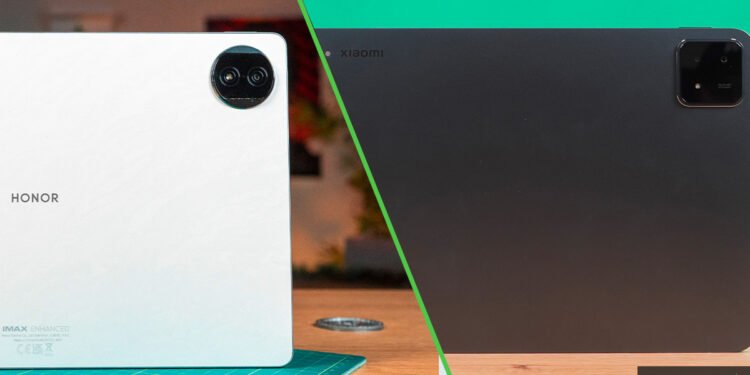With its 12.4 -inch LCD screen, the Xiaomi Pad 6s Pro displays clear ambitions: seduce the gamers And lovers of fluidity thanks to its refresh rate of 144 Hz. On these points, no complaints. Nevertheless, with a slightly cold color temperature by default (7470 k) and a lively mode that does not really improve things, the shades displayed narrowly.
Admittedly, its Delta E of 1.5 is more than correct, but we are a little frustrated not to be able to fully exploit this promising slab. Its peak of brightness of 716 cd/m² is certainly respectable, but it is weakened by a reflectance rate of 45.2 %. Fortunately, its contrast of 1379: 1 is correct, and in the dark the brightness can drop to 2.2 cd/m², enough to spare your retinas.
The Magicpad 2 of Honor puts on the OLED, and the result is there. With a resolution slightly lower than that of its rival (290 ppi against 295 ppi), it largely compensates by an image quality that flats the eyes. Although its maximum brightness is slightly lower (650 CD/m²), the OLED shines with its infinite contrast and an nonexistent remanence time.
On the colorimetry side, the Honor tablet also scores points. If its lively mode remains a little cold with a temperature of 7682 K, switching to natural mode allows you to approach the reference standard with a Delta E of 1.7. In other words, you will have colors close to reality.
Finally, the refresh rate of 144 Hz is also there. Admittedly, without LTPO technology for total adaptability, but for a tablet thought more for entertainment than for the sessions of gaming Hardcore, it remains a beautiful asset.
If the Xiaomi Pad 6s Pro impresses with its fluidity and light, it lacks a bit of finesse in the color rendering. The Honor Magicpad 2, thanks to its OLED screen and a better controlled colorimetry, is essential in this round.
With its 12.4 -inch LCD screen, the Xiaomi Pad 6s Pro displays clear ambitions: seduce the gamers And lovers of fluidity thanks to its refresh rate of 144 Hz. On these points, no complaints. Nevertheless, with a slightly cold color temperature by default (7470 k) and a lively mode that does not really improve things, the shades displayed narrowly.
Admittedly, its Delta E of 1.5 is more than correct, but we are a little frustrated not to be able to fully exploit this promising slab. Its peak of brightness of 716 cd/m² is certainly respectable, but it is weakened by a reflectance rate of 45.2 %. Fortunately, its contrast of 1379: 1 is correct, and in the dark the brightness can drop to 2.2 cd/m², enough to spare your retinas.
The Magicpad 2 of Honor puts on the OLED, and the result is there. With a resolution slightly lower than that of its rival (290 ppi against 295 ppi), it largely compensates by an image quality that flats the eyes. Although its maximum brightness is slightly lower (650 CD/m²), the OLED shines with its infinite contrast and an nonexistent remanence time.
On the colorimetry side, the Honor tablet also scores points. If its lively mode remains a little cold with a temperature of 7682 K, switching to natural mode allows you to approach the reference standard with a Delta E of 1.7. In other words, you will have colors close to reality.
Finally, the refresh rate of 144 Hz is also there. Admittedly, without LTPO technology for total adaptability, but for a tablet thought more for entertainment than for the sessions of gaming Hardcore, it remains a beautiful asset.
If the Xiaomi Pad 6s Pro impresses with its fluidity and light, it lacks a bit of finesse in the color rendering. The Honor Magicpad 2, thanks to its OLED screen and a better controlled colorimetry, is essential in this round.



















